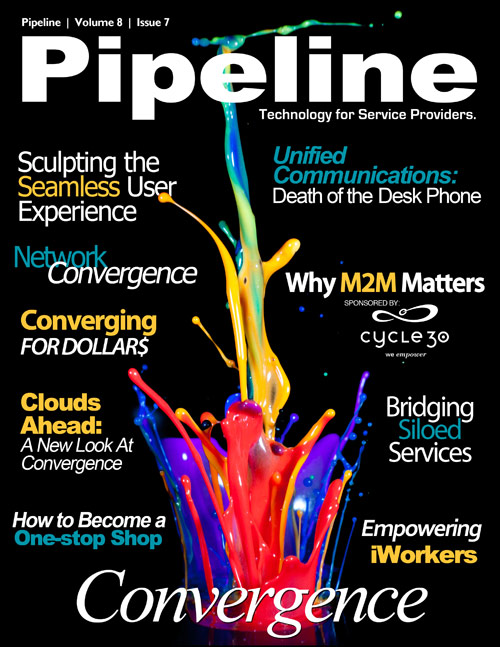By: Jesse Cryderman

Right now there are large billboards all around the city of Chicago with lightning bolts and bold colors, proclaiming the promise of 4G and LTE. The ads are also plastered on buses and inside trains–it's difficult to escape them. I recently flew to Florida, and on the plane, every seat-back tray was emblazoned with the same marketing.
There's only one problem: customers buy and consume services, not networks.
No one waiting on a CTA train platform leans over to their neighbor to say, "Hey, check out this LTE network." On the other hand, innovative mobile apps and services almost invite inquiry. A real-time train travel tracker, for instance, will certainly become part of that on-platform conversation when there is a delay. Depositing a check into your bank account by snapping a pic with your phone? Brilliant. Offering Youtube content on the LTE network that looks just like a 3G network? Boring. If someone is watching the new episode of American Horror Story on their tablet on the train, I'm likely to ask how. They're unlikely to respond with a description of the network technology.
Herein lies the challenge for service providers. Demand is up, people want cool, and they want it anywhere, at anytime, and at a reasonable quality of service (QoS). But while traffic is growing over 30 percent per year, revenues are not. Internet connectivity alone isn't compelling because it's not unique and exists everywhere, and simply jacking up the speedometer might enable a better experience down the road, but it's costly, and there is considerable investment in legacy systems that can't be ignored. Speed badges don't equal QoS either; offering high-speed connectivity, but subsequently throttling it in order to deploy "4G" service to more customers, is a losing bid in the end. Further, bandwidth and speed are useless in a service vacuum—they are utilities.


VoIP /VoLTE/VoC, IPTV, enterprise unified communications, a rise in cloud solutions—all of these increasingly popular services and their transport technology have driven the metered migration to a single, all-IP network. The race to 4G is on, and rightfully so; network convergence promises to enable rapid sale, deployment, management, and support of new services across multiple devices, and at a reduced cost. A discussion of how carriers are undertaking this journey is important, and there are lessons to be learned from some of the smaller carriers who are well on their way to an all-IP reality. There are also some inventive solutions that enable uninterrupted interoperability with legacy systems as carriers move forward to a single network.
However, while the migration to all-IP is happening, it's not the whole story; ubiquitous access to the Internet threatens to relegate CSPs to commodity status if they don't leverage the collective strength of their existing networks in innovative ways to provide unique, converged, and desirable services to their customers across multiple devices.
Different Flavors of Convergence
Like many buzzwords, convergence has been appropriated by a multitude of solutions that effectively collapse siloed activities into a unified architecture. There are unified communications solutions that wave the convergence flag. Then there's convergent billing, and fixed/mobile convergence. To better understand the different flavors of convergence, let's divide the group into four categories. The four "Cs" of convergence are easy to remember by the acronym DUNS:
- Device Convergence: Devices that support multiple access technologies, like dual-mode phones, internet-connected set-top boxes (STBs), or enhanced multimedia terminals (eMTAs) that provides both internet access and VoIP services.
- User Convergence: Instances such as single-login, unified billing, unified support, unified communications, etc.
- Network Convergence: The ability to leverage multiple networks to create unique services utilizing differing access technologies
- Service Convergence: Converging multiple services together for a unique service experience such as mobile TV or TV Caller ID.
For this article, we're primarily talking about network convergence, and related user convergence. This is Convergence with a capital "C." "Network convergence is the seamless handoff of content across multiple devices. It's about a fluid front-end user experience backed by fully integrated back office operations," says Marc Hayden, executive vice president, Sales and Marketing at CHR Solutions. "It's no longer about getting just one bill—but all forms of communication, media, entertainment and social networking through one channel."









